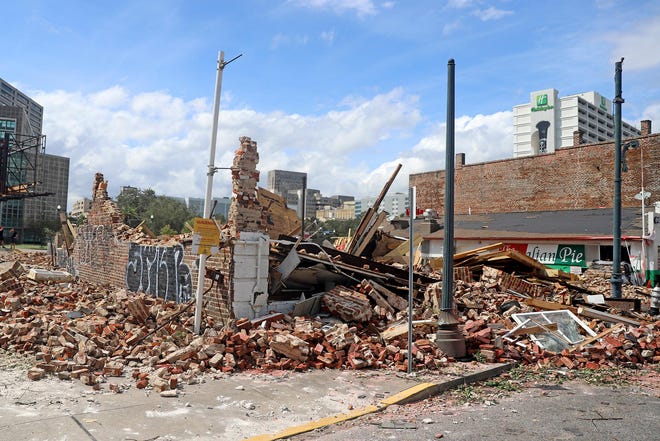
- Weather disasters are hitting the globe five times more often than they did in the 1970s.
- Causes of the calamities include climate change, more extreme weather and improved reporting.
- But there is some good news: disasters are less deadly than they used to be.
If you think weather disasters are getting worse, you're right.
In fact, disasters caused by weather are hitting the globe five times more often and leading to seven times more damage than they did in the 1970s, according to a new report released Wednesday by the United Nations' weather agency, the World Meteorological Organization.
Causes of the calamities include climate change, more extreme weather and improved reporting.
But there is some good news: Disasters are less deadly than they used to be, the report said. Specifically, in the 1970s and 1980s, they killed an average of about 170 people a day worldwide. In the 2010s, that dropped to about 40 per day.
Climate change is a leading cause of the disasters, experts said:
“The number of weather, climate and water extremes are increasing and will become more frequent and severe in many parts of the world as a result of climate change,” said WMO Secretary-General Petteri Taalas in a statement.
“That means more heat waves, drought and forest fires such as those we have observed recently in Europe and North America. We have more water vapor in the atmosphere, which is exacerbating extreme rainfall and deadly flooding. The warming of the oceans has affected the frequency and area of existence of the most intense tropical storms,” he said.
“Economic losses are mounting as exposure increases," he said.
What’s driving the destruction is that more people are moving into dangerous areas as climate change is making weather disasters stronger and more frequent, U.N. disaster and weather officials said. At the same time, experts said, better weather warnings and preparedness are lessening the death toll.

The report, which surveyed 11,000 weather disasters, is the most comprehensive review of deaths and economic losses from weather and climate extremes to date, according to the WMO. It assesses the entire 50-year period from 1970 to 2019.
The five most expensive weather disasters since 1970 were all storms in the United States, topped by 2005’s Hurricane Katrina. The U.S. also accounts for one-third (38%) of all global economic losses caused by weather, climate and water hazards.
The five deadliest weather disasters were in Africa and Asia – topped by the Ethiopian drought and famine in the mid-1980s and Cyclone Bhola in Bangladesh in 1970.
Of the top 10 disasters, the hazards that led to the largest human losses during the period were droughts (650,000 deaths), storms (577,232 deaths), floods (58,700 deaths) and extreme temperatures (55,736 deaths), the report said.
Contributing: The Associated Press
Source link







